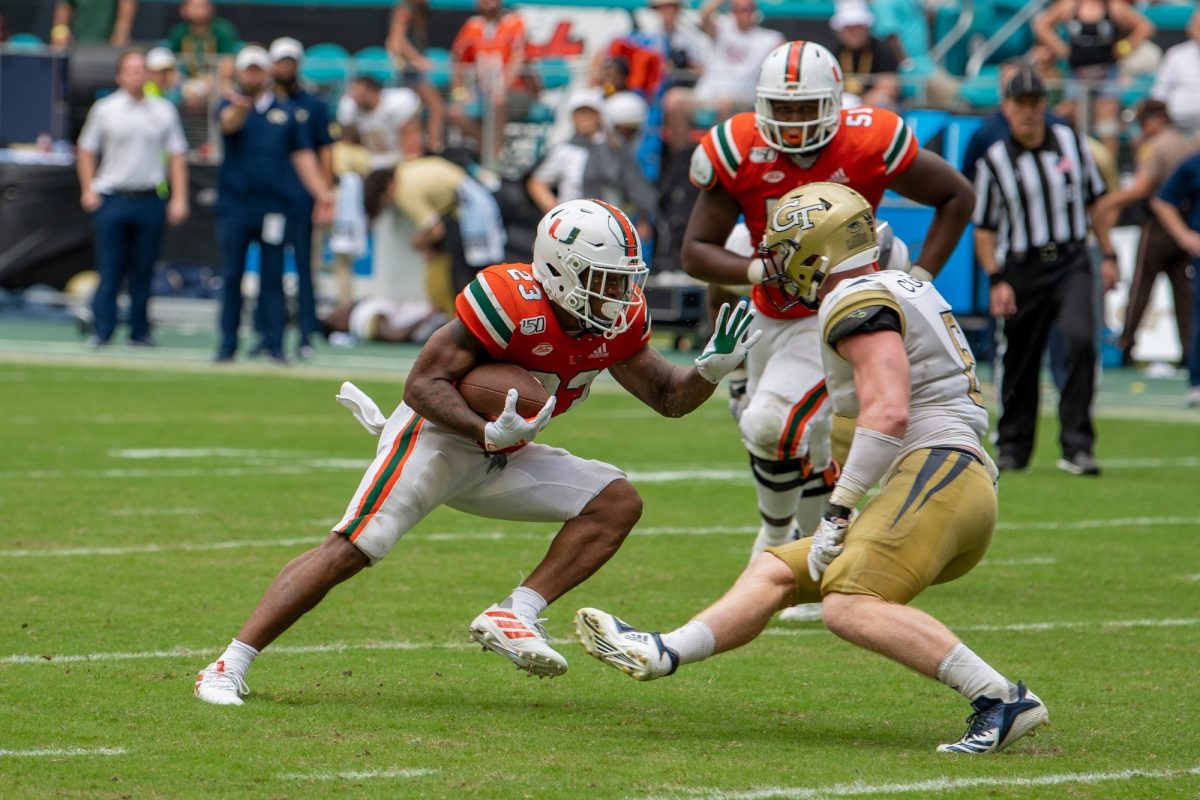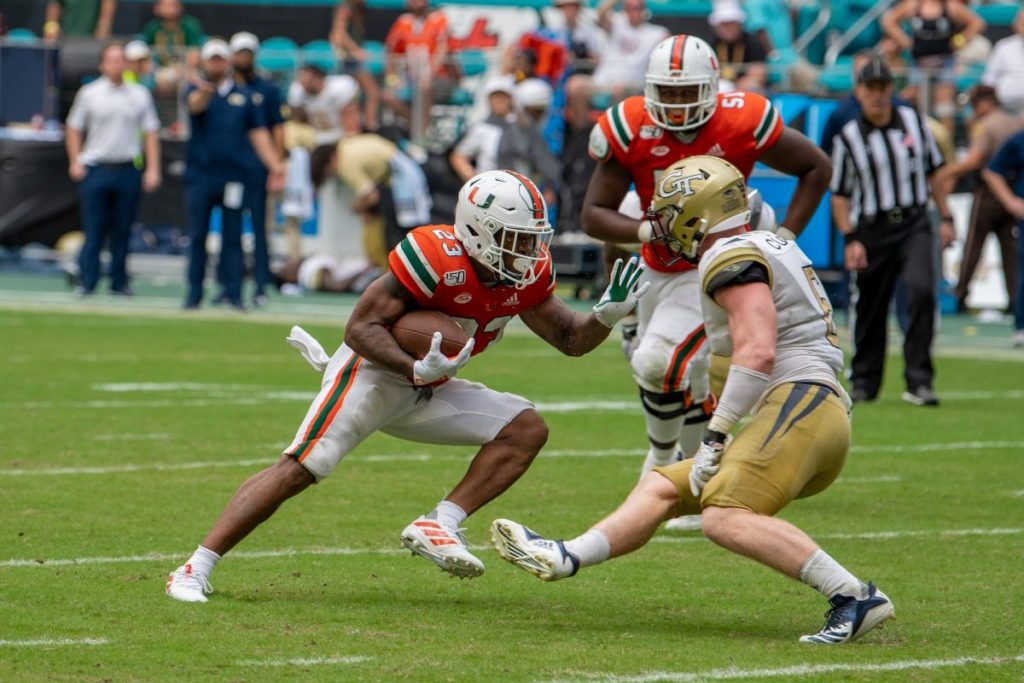

While the Miami Hurricanes lost a valuable piece of their offense in the offseason after DeeJay Dallas was drafted by the Seattle Seahawks in the fourth round of the 2020 NFL Draft, the void he left behind in Coral Gables will soon be filled by an electric mix of players in the 2020 season.
After Dallas’s breakout junior campaign that saw him post career highs in rush attempts, rushing yards, rushing yards per attempt and touchdowns, his decision to leave for the NFL gives junior running back Cam’Ron Harris the primary running duties. A four-star prospect that enrolled at Miami in 2018, Harris was a reliable, productive second option behind Dallas last season. In 13 games, he accumulated numbers strikingly similar to Dallas’s in their respective sophomore campaigns, with both rushing for 576 yards on 114 attempts and scoring five touchdowns.
Aside from Harris, Miami’s only other experienced option at running back is Robert Burns, a junior who has seen limited play time throughout his two-season tenure with the Hurricanes. In eight total games, he has scored one career touchdown and averaged 4.1 yards per rush. Burns has been limited in fall camp practice as he recovers from an injury.
However, where Miami lacks in veteran talent, they compensate for in youthful talent. In the 2020 freshmen class, the Hurricanes added layers of talented depth to the running back position with freshmen Jaylan Knighton and Donald Chaney, Jr., who were the team’s third and fourth highest ranked signees, respectively.
Knighton, at five-foot-nine and 195 pounds, has a physically developed and compact build suitable for his position, but his true asset on the gridiron is his explosive speed. Labeled as a “true home run threat with good vision, quickness and verified long speed” by 247Sports, Knighton excels in lateral movement and maneuvering through defenders with an elite-level burst. In a press conference after Miami’s second fall camp scrimmage, Knighton told reporters he clocked his fastest speed of 21.9 mph on a run.
Chaney Jr. is slightly taller than Knighton and has a stronger frame at five-foot-ten and 205 pounds. With verified explosion and above-average long speed, Chaney Jr. has the potential to be a primary running threat in his college career and figures to be an asset in Miami’s running back rotation in 2020.
Depth Chart
The Hurricanes’ combination of veteran leadership and stability in Harris and the dynamic young talents of Knighton and Chaney Jr. should make for an exciting, productive season at running back.
As the most established player at running back and listed first on the depth chart, Harris will get the bulk of the opportunities on offense for Manny Diaz’s team. Chaney Jr. and Knighton are both listed as the second running back on the depth chart with Burns behind both of them. Diaz said in Monday’s press conference that they have a plan for how Chaney Jr. and Knighton will share the ball on Thursday.
When the Hurricanes take on UAB for their first game of the season on Thursday, Sept. 10, Miami’s revamped running back depth will be put to the test as Knighton and Chaney Jr. look to make names for themselves in the realm of college football.





